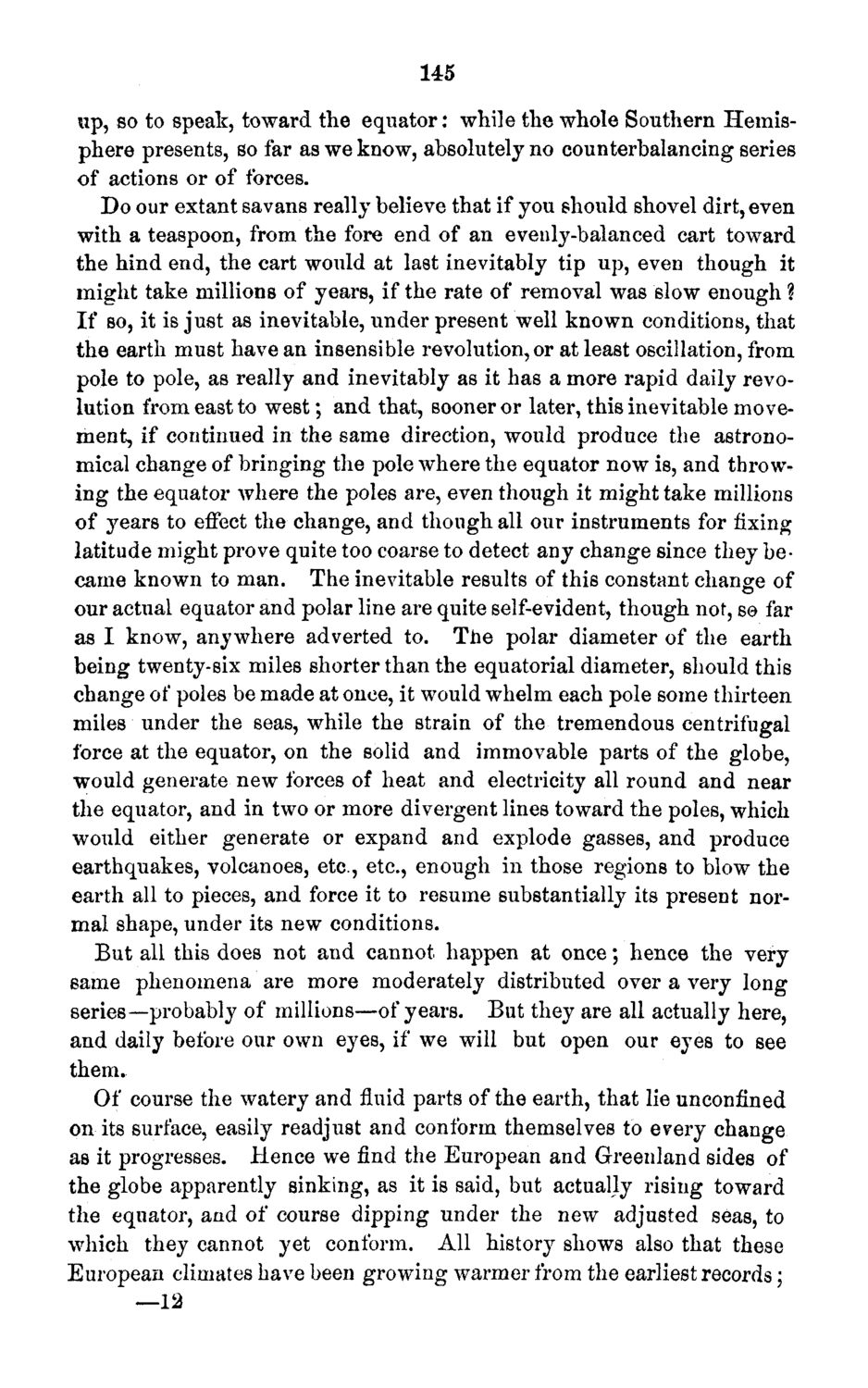| |
| |
Caption: Board of Trustees Minutes - 1871
This is a reduced-resolution page image for fast online browsing.

EXTRACTED TEXT FROM PAGE:
145 up, so to speak, toward the equator: while the whole Southern Hemisphere presents, so far as we know, absolutely no counterbalancing series of actions or of forces. Do our extant savans really believe that if you should shovel dirt, even with a teaspoon, from the fore end of an evenly-balanced cart toward the hind end, the cart would at last inevitably tip up, even though it might take millions of years, if the rate of removal was slow enough ? If so, it is just as inevitable, under present well known conditions, that the earth must have an insensible revolution, or at least oscillation, from pole to pole, as really and inevitably as it has a more rapid daily revolution from east to west; and that, sooner or later, this inevitable movement, if continued in the same direction, would produce the astronomical change of bringing the pole where the equator now is, and throwing the equator where the poles are, even though it might take millions of years to effect the change, and though all our instruments for fixing latitude might prove quite too coarse to detect any change since they became known to man. The inevitable results of this constant change of our actual equator and polar line are quite self-evident, though not, so far as I know, anywhere adverted to. The polar diameter of the earth being twenty-six miles shorter than the equatorial diameter, should this change of poles be made at once, it would whelm each pole some thirteen miles under the seas, while the strain of the tremendous centrifugal force at the equator, on the solid and immovable parts of the globe, would generate new forces of heat and electricity all round and near the equator, and in two or more divergent lines toward the poles, which would either generate or expand and explode gasses, and produce earthquakes, volcanoes, etc., etc., enough in those regions to blow the earth all to pieces, and force it to resume substantially its present normal shape, under its new conditions. But all this does not and cannot happen at once; hence the very same phenomena are more moderately distributed over a very long series—probably of millions—of years. But they are all actually here, and daily before our own eyes, if we will but open our eyes to see them. Of course the watery and fluid parts of the earth, that lie unconfined on its surface, easily readjust and conform themselves to every change as it progresses. Hence we find the European and Greenland sides of the globe apparently sinking, as it is said, but actually rising toward the equator, and of course dipping under the new adjusted seas, to which they cannot yet conform. All history shows also that these European climates have been growing warmer from the earliest records; —12
| |